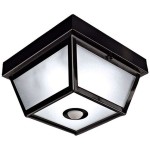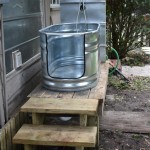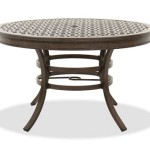Enhancing Your Outdoor Space with a Water Fountain
The integration of a water fountain into an outdoor home environment presents numerous benefits, transforming a simple space into a tranquil oasis. The presence of moving water introduces visual appeal, soothing sounds, and positive environmental impacts, all contributing to an enhanced living experience. Careful consideration of various factors, including design, materials, and maintenance, is crucial to selecting and installing a water fountain that seamlessly blends with the existing landscape and provides enduring enjoyment.
Water features, in general, have been used for centuries in landscape design, dating back to ancient civilizations. They were not merely for aesthetic purposes but also served practical functions such as providing a source of drinking water and irrigating gardens. Today, while the practical applications may be secondary, the aesthetic and psychological benefits remain significant. A well-placed water fountain can become a focal point, drawing attention and adding a touch of elegance and sophistication to any outdoor space.
The decision to incorporate a water fountain is a personal one, often driven by a desire to improve the ambiance of the home and create a more relaxing atmosphere. The gentle sound of cascading water can effectively mask unwanted noise from traffic, neighbors, or other external sources, promoting a sense of peace and tranquility. Furthermore, water features are known to have a calming effect, reducing stress and promoting relaxation. This makes them an ideal addition to patios, gardens, or any outdoor area intended for leisure and recreation.
Aesthetic Benefits and Design Considerations
The visual appeal of a water fountain is undeniable. Its design can range from classic and traditional to modern and minimalist, allowing homeowners to choose a style that complements their existing décor and architectural preferences. A wide variety of materials are available, including stone, concrete, metal, resin, and ceramic, each offering a unique aesthetic and durability profile. Stone fountains, for instance, provide a natural and rustic feel, while metal fountains often lend a contemporary and sleek appearance.
The size and scale of the water fountain should be proportionate to the surrounding space. A large, elaborate fountain might overwhelm a small patio, whereas a small, understated fountain might get lost in a sprawling garden. It is essential to carefully measure the available area and consider the overall layout of the landscape before making a purchase. Consider also the surrounding elements, such as plants, furniture, and lighting, to ensure that the fountain integrates seamlessly into the existing environment.
The specific design of the fountain itself can significantly impact its overall aesthetic. Tiered fountains, cascading fountains, and wall fountains are just a few of the many options available. Tiered fountains feature multiple levels, creating a dynamic and visually engaging display. Cascading fountains simulate the natural flow of a waterfall, providing a soothing and realistic effect. Wall fountains are a space-saving option that can be easily installed against a wall or fence, adding a touch of elegance to even the smallest of outdoor areas. The choice will depend on the desired aesthetic and the available space.
Lighting can further enhance the visual appeal of a water fountain, especially during the evening hours. Submersible lights can be strategically placed to illuminate the water flow, creating a dramatic and captivating display. Color-changing lights can add an extra layer of visual interest, allowing homeowners to customize the ambiance to suit their mood or preferences. The integration of appropriate lighting can transform a water fountain from a daytime feature into a stunning nighttime spectacle.
Environmental and Practical Advantages
Beyond the aesthetic benefits, water fountains offer several practical and environmental advantages. The constant movement of water helps to humidify the air, which can be particularly beneficial in dry climates. This increased humidity can also help to reduce dust and allergens, improving air quality and creating a more comfortable outdoor environment. The presence of water can also attract birds and other wildlife, adding a touch of nature to the garden.
The sound of flowing water is known to have a calming and therapeutic effect. It can help to mask unwanted noise from traffic, neighbors, or other external sources, creating a more peaceful and relaxing atmosphere. The gentle sound of cascading water can also promote relaxation and reduce stress, making it an ideal addition to patios, gardens, or any outdoor area intended for leisure and recreation. This auditory benefit can enhance the overall enjoyment of the outdoor space.
From a practical standpoint, water fountains can be relatively low-maintenance. Many models are equipped with recirculating pumps, which means that they do not require a constant supply of fresh water. The water is simply recycled through the fountain, minimizing water consumption and reducing the need for frequent refills. However, regular cleaning and maintenance are essential to ensure that the fountain remains clean and functional. This includes removing debris, algae, and other buildup that can accumulate over time.
The selection of the appropriate pump is critical to the proper functioning of the water fountain. The pump should be sized appropriately for the size of the fountain and the desired water flow. A pump that is too small will not provide adequate water pressure, while a pump that is too large may consume excessive energy. It is essential to consult with a qualified professional to determine the appropriate pump size for the specific fountain installation. Energy-efficient pumps are available and can help to reduce operating costs.
Installation, Maintenance, and Long-Term Care
The installation process for a water fountain can vary depending on the type of fountain and the complexity of the design. Some fountains are relatively easy to install, requiring only a simple connection to a water source and an electrical outlet. Other fountains may require more extensive preparation, such as digging a foundation or running electrical wiring. It is essential to carefully follow the manufacturer's instructions and to consult with a qualified professional if needed. Proper installation is crucial to ensure the fountain functions properly and safely.
Regular maintenance is essential to keep a water fountain clean and functional. This includes cleaning the fountain basin, removing debris, and checking the pump and plumbing for any signs of wear or damage. Algae growth is a common problem in water fountains, especially in sunny locations. Algaecides can be used to control algae growth, but it is important to choose a product that is safe for plants and animals. Regular cleaning and maintenance can help to prevent algae growth and keep the fountain looking its best.
During the winter months, it is important to take steps to protect the water fountain from freezing temperatures. Water expands when it freezes, which can cause damage to the fountain basin, pump, and plumbing. In areas with harsh winters, it may be necessary to drain the fountain completely and store the pump indoors. Alternatively, a fountain heater can be used to prevent the water from freezing. Proper winterization is essential to prevent damage and extend the lifespan of the water fountain.
The long-term care of a water fountain involves periodic inspections and repairs. Check the fountain regularly for any signs of leaks, cracks, or other damage. Repair any damage promptly to prevent further deterioration. Replacing worn or damaged parts can help to extend the lifespan of the fountain and keep it functioning properly. With proper care and maintenance, a water fountain can provide years of enjoyment and enhance the beauty of any outdoor space.
In addition to the physical maintenance, it is also important to monitor the water quality. Regularly test the water for pH levels and adjust as needed to maintain a healthy environment for any plants or wildlife that may be present. The use of a water filter can help to remove impurities and improve water clarity. Maintaining good water quality is essential for the health and longevity of the fountain.
Finally, consider the long-term impact of the water fountain on the environment. Choose sustainable materials and practices whenever possible. Use energy-efficient pumps and lighting to minimize energy consumption. Conserve water by using a recirculating pump and minimizing water loss through evaporation. By making environmentally conscious choices, homeowners can enjoy the benefits of a water fountain while minimizing their impact on the planet.
:strip_icc()/CTG505842-b44078cc682540f889fba6351666667b.jpg?strip=all)
19 Garden Fountain Ideas For A Sensory Experience

Acorn Garden Small Water Fountain

Watnature 45 2 In H Cement Outdoor Floor Water Fountain 3 Tiers Zen Garden Cascading Waterfall With Pump For Patio Yard Lawn Fd51054 The Home
Water Fountain For Home Garden Flotaa

Water Feature Ideas To Transform Your Outdoor Space Garden Design

Small Contemporary Tier Outdoor Fountain Soothing Company

Large Outdoor Marble Tiered Water Fountain Home Decor For Sale Youfine

Small Water Fountains Sold On Temu United States

Williamsburg Pineapple 2 Tier Garden Water Fountain

Things To Consider When Choosing A Water Fountain For Home








